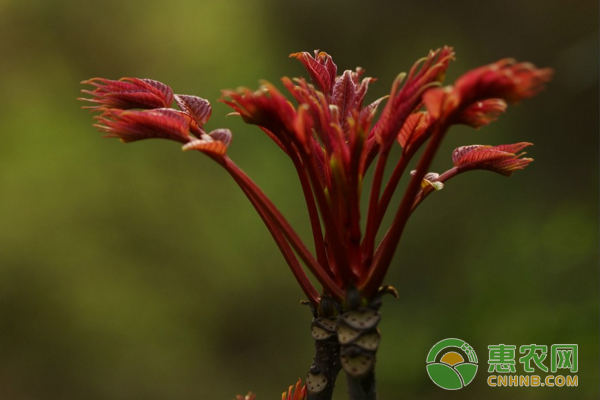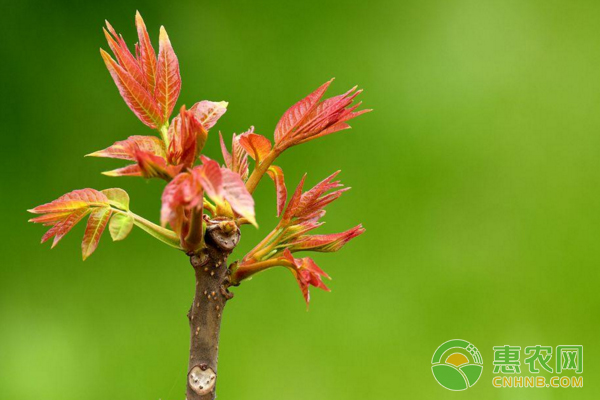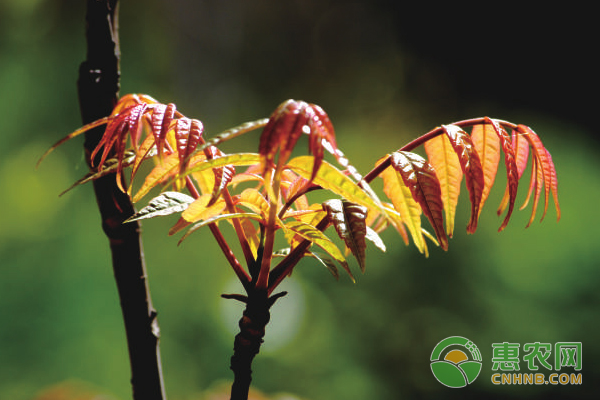What is the prospect of camphor planting? Toona sinensis seed bud and seedling cultivation techniques
Citron is one of the common wild vegetables. It can also be called camphor bud, fragrant pile head, red eucalyptus, glutinous rice, etc. It is very nutritious and has therapeutic effects. It treats external cold, rheumatism, stomach pain, dysentery, etc. What is the prospect of camphor planting in 2018? How should the camphor seed sprouts and seedlings be planted? First, planting prospects Citron is very popular in the city, and the price in the supermarket is relatively high, the price is 30 yuan a catty. Second, the cultivation technology of camphor seed sprouts Seed treatment a. Use the seeds of the red oil carp, which has high germination rate and good quality. b. First, the seeds are soaked in water for 5 hours, then immersed in 1001% potassium permanganate for 15 minutes for disinfection, then continue to soak with water and clean with 20 degrees warm water. c. When the camphor seeds absorb water for expansion, control the dry water, and put the seeds in a container with three layers of clean wet cloth to carry out germination. It is necessary to pay attention to avoid light. d. Rinse with warm water of about 20 degrees every day during germination. After about 7 days, the seeds can be sown after being exposed. 2. Sowing a. Spread a layer of paper or gauze in the disinfected seedling tray, then add 2.5 cm thick perlite to spread the seeds on top. b. The seeding amount per plate is 150g. After sowing, cover 1.5cm thick perlite, then spray it with 20-25 degrees warm water and put it on the cultivation shelf. 3. Management after sowing a. Spray twice a day with warm water of about 20 degrees to keep the air humidity at 80%. At the same time, avoid excessive water holding capacity or water in the tray. b. When the buds are arched out of the substrate, the daytime temperature is controlled at 18-23 degrees, generally about 12 days, and the buds will grow to 5-7 cm. When the root tip has not turned yellow, it can be harvested in time. c. In the sunny day, use the shading net for shading. d. According to the seedling color of the seedlings, the trays are upside down, left and right, 1-2 days after the tray, 10 cm of the seedlings, and the real leaves are harvested. Third, the cultivation techniques of camphor sprouts Nursery a, nursery: choose the soil layer fertile and loose nursery. b. Before sowing: fertilize and water should be sufficient. Open a 20cm row of trenches in the seedbed. The depth of the ditch is 2-4cm and the width is 6-8cm. Then the seeds are evenly spread into the ditch, and the soil and plastic film are covered after sowing. c. Control reasonable temperature, regularly weed the field, and strengthen fertilizer and water management. 2. Colonization a, planting period: after the winter leaves to the early spring before the germination. b. Amount of planting: 3000 plants per acre are planted, green manure can be planted between rows, and then turned into fertilizer. c. Winter warm greenhouse seedlings, when the temperature is transplanted at 3-5 degrees, 6,000 plants are transplanted per acre, and watering should be done in time after planting. 3. Field management a, the growth period of the sprouting new shoots and after harvesting and topdressing and watering. b. Spray the seedlings with 0.01% gibberellin to increase the growth rate of the citron. c. After harvesting two or three times, it is necessary to carry out dwarf treatment to avoid the growth of the camphor too fast. The specific operation is 15% paclobutrazol 200-400 times liquid, spray once every 15 days, and spray two or three times continuously. 4. Timely harvesting a. The best harvesting period: when the axillary bud grows to 15-20cm, it will be harvested in time. b. Precautions for harvesting: Keeping 1-2 leaves at the base is conducive to the germination of axillary buds.
China Pigment Suppliers
Here you can find the related products in Pigment, we are professional
manufacturer of Pigment. We focused on international export product
development, production and sales. We have improved quality control processes of Pigment to ensure each export qualified product.
If you want to know more about the products in Pigment, please click the Product details to view parameters, models, pictures, prices and Other information about Pigment.
Whatever you are a group or individual, we will do our best to provide you with accurate and comprehensive message about Pigment!
Lycopene, Amaranth, β-Carotene, Beta carotene, Carmine, Food Colorant Xi'an Gawen Biotechnology Co., Ltd , https://www.ahualyn-bios.com


